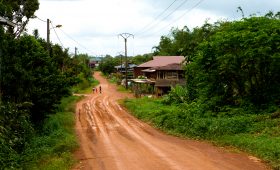Exploring Citadelle Laferrière: A Journey Through History
Citadelle Laferrière is a fortress that stands as a powerful symbol of Haiti’s fight for independence. Built between 1805 and 1820 under the direction of Henri Christophe, this UNESCO World Heritage Site is perched atop the 3,000-foot Bonnet à l’Eveque mountain. Its strategic location offers sweeping views of the surrounding countryside and the Caribbean Sea, with Cap-Haïtien and the Atlantic Ocean visible from its roof.
The Historical Significance of Citadelle Laferrière
The fortress was part of a defensive strategy to protect Haiti from potential foreign invasions, particularly from the French. Although a French attack never materialized, the Citadelle remains a testament to the resilience and ingenuity of the Haitian people. Its construction cost up to 20,000 lives, but contrary to some claims, slavery was not used; laborers were generally compensated for their work.
Equipped with 365 cannons, the Citadelle was designed to withstand sieges, with large cisterns and storehouses capable of sustaining 5,000 defenders for up to a year. The fortress also included palace quarters, dungeons, and other facilities, making it a self-sufficient stronghold.
Best Time to Visit
For the most pleasant experience, plan your visit during Haiti’s dry season, from November to April. This period offers clear skies and comfortable temperatures, ideal for exploring the fortress and enjoying the panoramic views. If you don’t mind occasional rain and prefer fewer tourists, consider visiting during the rainy season from May to October. Just be prepared for muddy trails and bring appropriate rain gear.
Getting There
Citadelle Laferrière is located near Milot, about 12 miles south of Cap-Haïtien. If you’re traveling from outside Haiti, fly into Toussaint Louverture International Airport in Port-au-Prince. From there, you can hire a private driver or join a guided tour to Cap-Haïtien for a more comfortable journey. Alternatively, take a public bus or shared taxi, but be aware that these options may be less reliable.
Once in Cap-Haïtien, arrange transportation to Milot, where the trail to the Citadelle begins. The hike is steep but manageable, and you can rent a horse or hire a guide with a mule if needed.
Exploring the Fortress
Upon reaching the Citadelle, you’ll find a vast complex with informative signage and guided tours available. The fortress’s design is both functional and formidable, with walls rising 130 feet from the mountaintop. The angles of the structure were intentionally designed to deflect cannonballs, showcasing the strategic foresight of its builders.
Inside, you’ll see stockpiles of cannonballs and learn about the fortress’s history and significance. Allocate enough time to explore its various sections and fully appreciate the stories embedded in its walls.
While the Citadelle is a remarkable site, be prepared for the physical demands of the hike and the potential for rain if visiting during the wet season. Despite these challenges, the experience of standing atop this historic fortress, with its breathtaking views and rich history, is well worth the effort.




